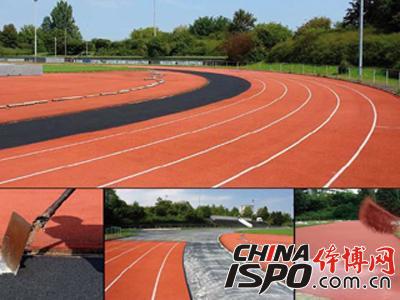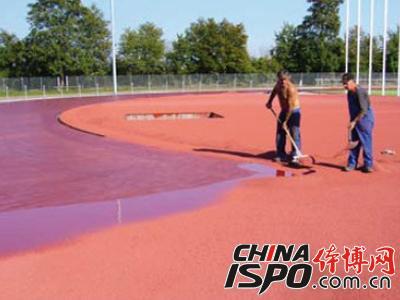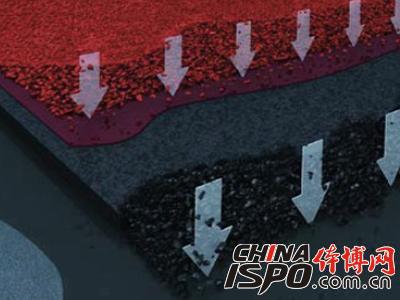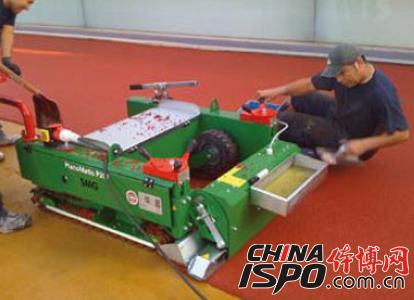Many of the playgrounds on campus today feature plastic runways that look sleek and professional. However, experts have raised concerns about the potential health risks associated with these surfaces. They suggest that certain plastics used in the construction of these runways may emit harmful gases, which could negatively impact students' health. With track and field events becoming increasingly popular, it's important to understand what makes a 400-meter plastic track so special.

*Runway laying screen*
In China, most of the plastic tracks are made from industrial polyurethane, also known as TDI (Toluene Diisocyanate). This material is mixed with an adhesive and curing agent before being laid down. The resulting surface consists of organic compounds that can release irritating gases when exposed to heat or strong sunlight. Many students and teachers have noticed this issue, often describing a noticeable plastic smell after using the track.
Despite the investment schools make in installing these runways—intended to improve sports facilities and provide better training environments—there are often restrictions on their use. Some campuses limit access by fencing off the areas or restricting open hours. This is partly due to the high cost of maintaining such surfaces, as excessive use can lead to wear and tear over time.
Modern stadiums have largely transitioned from traditional coal slag tracks to synthetic ones. While these artificial surfaces offer improved performance and durability, many people still struggle to distinguish between different types of synthetic tracks. This article aims to clarify the differences and help you understand what makes a 400-meter plastic runway unique.
**The Origin of "Plastic Runway"**
When designing large outdoor stadiums, planners must decide on the layout and function of each area. A typical setup includes a grass-covered football pitch surrounded by a 400-meter running track. Other areas like javelin throwing zones and long jump sand pits are also included. These spaces are now mostly covered with synthetic materials.
Although some older tracks still use coal cinder, they are gradually being replaced by synthetic alternatives. In the West, these are commonly called "tartan tracks," named after a type of fabric developed in the 1960s. These tracks offered better protection for athletes and helped create fairer competition conditions. Today, most plastic runways retain their classic red color and grainy texture, though manufacturers can produce them in various colors.
**Foundation Layer – Invisible but Important**

*Workers Spread EPDM Particles*
According to German standards, synthetic tracks should include an asphalt base, an elastic layer, and a final surface layer. The elastic layer is typically made from composition rubber particles and polyurethane, while the top layer uses EPDM particles mixed with polyurethane. This combination gives the track its distinctive texture and durability.
**Installation Methods**

*On-site construction installation runway*
There are several ways to install a plastic track. One common method involves constructing the track on-site, layer by layer. Another is the hybrid approach, where parts of the track are pre-made in a factory and then assembled. Some tracks are even produced as coils and transported directly to the site. Each method affects the final quality and performance of the track.
**Prefabricated Runway**

*Use the machine to install the runway*
Fully prefabricated runways are installed like floor tiles and are often used in high-level competitions like the Olympics. These tracks offer superior performance, comfort, and speed. Unlike on-site constructed tracks, prefabricated ones are made in controlled factory environments, ensuring consistent quality. They can be installed quickly and are easier to maintain. Their durability and aesthetic appeal make them a preferred choice for elite athletic events.
Dropping Glue Ornaments,Customized Anime Ornaments,Customized Toy Ornaments,Creative Dropper Ornaments
DONGGUAN TETSUMET TECHNOLOGY CO.,LTD , https://www.tetsumet.com